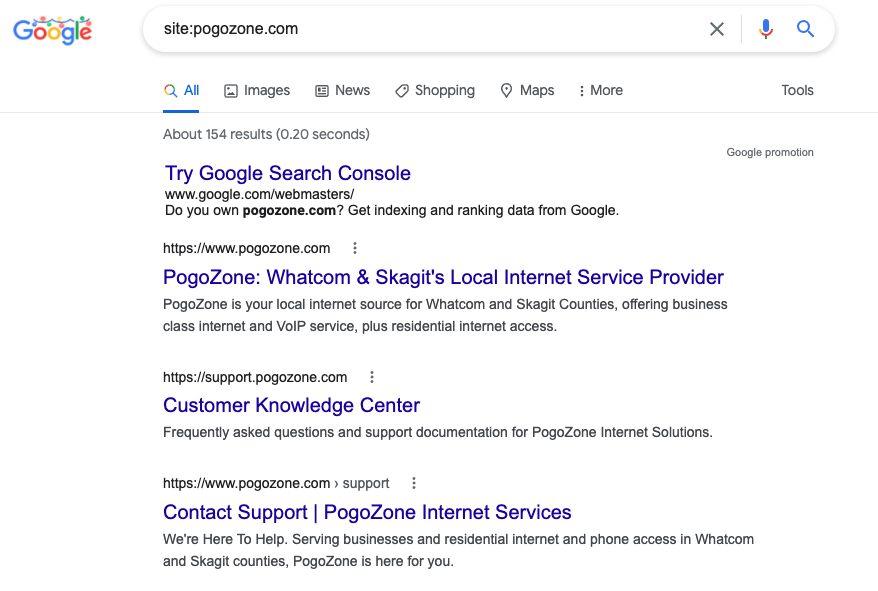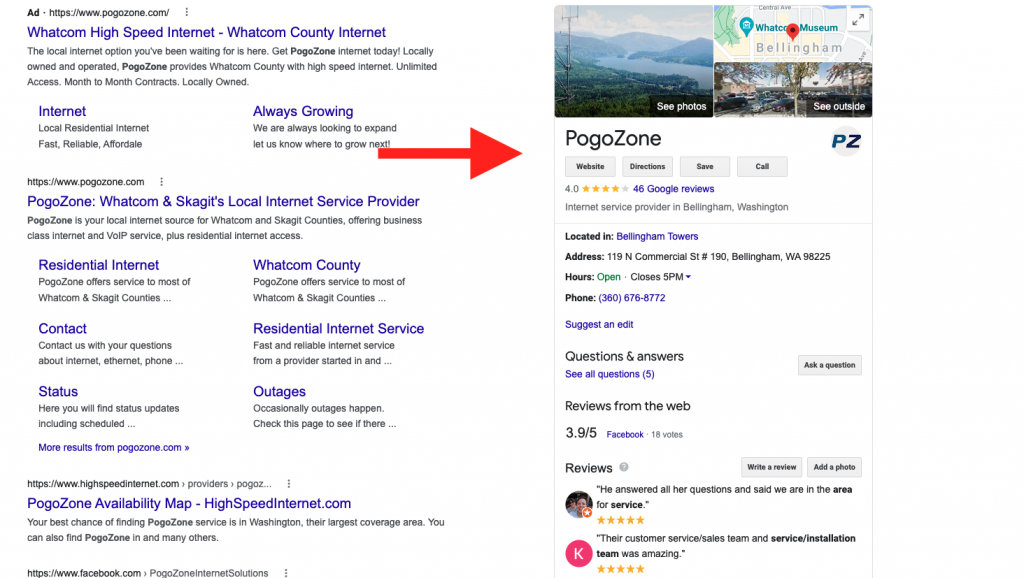“Website Marketing”. Two simple words that tend to induce anxiety and dread in the minds of small business owners. But, website marketing doesn’t have to be a chore that lives rent free in your head and takes up what little free time you have left in the day. There are simple steps that you can take to help drive traffic to your website. And since we’re in the internet business, we thought we’d share our top tips for marketing your small business website.
Note: Hopefully at this point you have a website already – if not, halt reading and contact a local website development company and get a website with Google Analytics installed ASAP.
Pre-Website Marketing
Google Analytics or Other Website Traffic Tools
If you don’t know how visitors found your website or what content they are looking at you’re not going to be very successful at marketing your website. Knowing how visitors engage on your website is a very important component of website marketing. Without getting too far in the weeds here, we’ll mention that having a tool like Google Analytics on your website will help you make marketing decisions and can prevent you from making costly mistakes. So, if you don’t already have a traffic monitoring tool on your website, get one ASAP.
Website Health Check
Just because you have a website does not mean that people can find your website. There are a few initial steps to take before diving into the wonderful world of website marketing.
Make Sure Your Website Is Showing In Search Results
There is a simple check to see if you are showing up in search results – other than Googling the name of your business which may give you a false positive result – type “site:yourwebsiteurl.com” into any search engine (ex. Google). If pages of your website show up, congrats your site is indexable! If nothing shows up, you may need to get help from a website developer to sleuth out what the issue is. Here are some reasons you may not be showing up in search results.
Example results:

Find Out Where You Rank
Now for the fun part. Where does your website rank? Let’s perform another search…but probably not in a way that you’re used to.
Chances are Google – and other search engines – know who you are. That’s the nature of the technology driven world we live in now. When search engines know who you are, they cater search results specific to you and your previous search history. So, if you perform a standard search for your business name or URL chances are super likely that you’re going to get skewed results because you’ve searched for yourself before. What’s the point in that? The real key is to find out where your website ranks for individuals or businesses that are searching for your products or services that may not know about your business. The important part of this next step is to make sure you are using a browser in a private or “incognito” mode. This helps mask who you are to the search engines and gives you cleaner search results.
Using a private browser and one of the many search engines, perform separate searches for the following:
- Your business name
- Keywords (words, several words, or sentences) that you’d expect someone to search to find your business. (Ex. Whatcom County Internet, High Speed Internet)
The search engine results page will give you an idea of where you rank in the search engines. (And don’t just use Google, check out Yahoo, Bing, and DuckDuckGo search results as well.)
If you don’t like where your business is ranking, then it’s time for some good ol’ Search Engine Optimization tactics. If you’re comfortable where you’re at with rankings, then skip down to the “How To Drive Traffic” section.
Search Engine Optimization
Search engine optimization (SEO) is the process of improving your website with the primary intent to increase search engine rankings and overall website health. Think of your website as a living plant that needs water and fertilizer to grow. You need to take measures to keep your website as current and relevant as possible so you can improve your rankings and/or keep your current favorable rankings.
We’re not going to lie, there’s a lot that goes into SEOing a website but the good news is that there are local companies that specialize in helping local businesses with their SEO needs. But, if you’re a DIYer or just don’t have the funds to hire outside help, here are some tricks and tips:
Content
Make sure the content on your website is relevant to your target audience and contains keywords that you’re trying to target. (But don’t overdo the keywords – that would be considered keyword stuffing and is bad in the eyes of the search engines.) A couple of years ago Google announced they prefer websites that use “natural language”. “Natural language” is conversational content that contains terms and lingo that your target audience uses – so make sure to speak your customers’ language. Example: if your target audience is tweens, no need to add an MBA flair to your content. Conversely, if your target audience is C-level executives, you may want to leave the slang and elementary babble out. (Unless that is your brand!)
GMB Listing
Formerly known as “Google Map Listings”, Google My Business listings are the side panels that show up when you Google a local business. They contain super related information like your website, address, phone number, reviews, photos, etc. Make sure you get control of your GMB listing by going through the “Claim My Business” process. Once you have control of your GMB listing, update your hours of operations and add any relevant photos. Additionally, reply to ALL reviews even if they are less than stellar. GMB listings can be super effective at driving local traffic to websites AND brick and mortar stores.

This barely touches the SEO iceberg, but it’s enough to get you going. For more about SEO, check out this article by Moz.
How To Drive Traffic
Email Marketing
“Email is more valuable than ever with an ROI of $42 for every dollar spent. Up from $38 in 2018.” (Source Campaign Monitor)
It’s important that your business remains in the brains of your target audience with announcements of promotions, new products or services, or simply a note reminding your audience why you’re awesome. Email marketing can be one of the most effective tools you can use to drive website traffic and/or feet through the door. Tools like MailChimp, Constant Contact and Campaign Monitor make managing email lists and sending campaigns extraordinarily easy. Bonus benefit: email marketing is typically very low cost.
It’s important to note that email marketing has some relatively strict guidelines, so make sure you follow the rules from the FTC, specifically the CAN-SPAM Act.
Pay-Per-Click Ads
Pay-per-click (PPC) advertising enables you to show ads to searchers, social media users, or people browsing partner websites. When a user clicks on an ad they are whisked away to a page on your website. PPC ads can be a great way to attract the attention of searchers that may not be familiar with your business while driving them to your website. With online tutorials, setting up ads is exponentially easier than most people think. Some PPC platforms include Google Ads, Bing Ads, and Facebook. The best part is, you can control how much per day that you spend and if you find that they aren’t working for you, there are no contracts to get out of…you simply just pause the ads.
Social Media
Yes, we have to have the dreaded social media conversation. We know a lot of local small businesses that want nothing to do with social media and we get it. But, managing a social media presence for your business is a solid marketing strategy. Not only does social media act as a tool to drive traffic to your website and keep your audience engaged and informed, it also helps with search engine rankings. Businesses with social media profiles that are regularly updated tend to rank higher than those without profiles.
We’re certainly not recommending that you sign your business up for all social media platforms. Choose the one (or two) that makes most sense to your business. For example, if your audience tends to be older, Facebook might be the best platform for you. If your audience is on the younger side, Instagram, Snapchat, or TikTok might be the best avenue.
These are just a few easy ways you can drive traffic to your small business website. If it seems overwhelming, just choose one or two of the tactics listed above and chip away at them as you can. If you need to really ramp up your businesses and increase sales, you may want to consider consulting with a local digital marketing agency.
